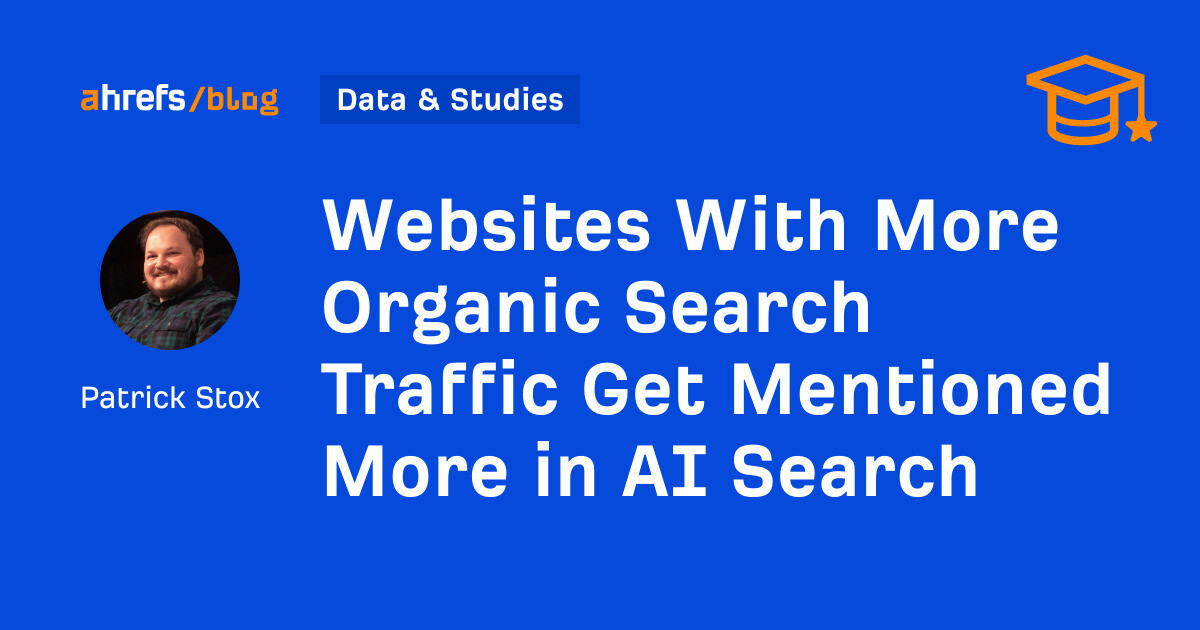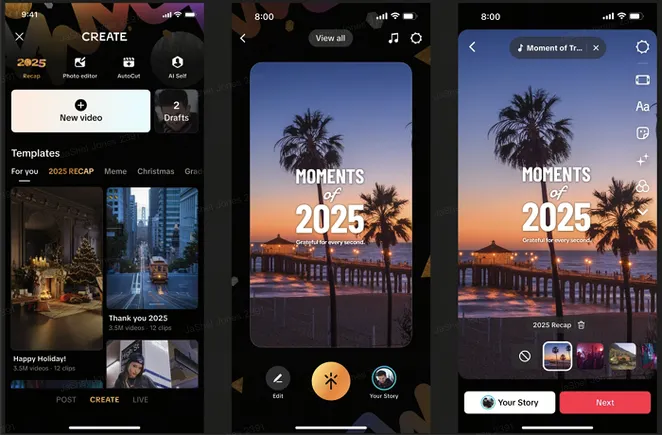How To Win In Generative Engine Optimization (GEO) via @sejournal, @maltelandwehr
Want your content to appear in AI Overviews, ChatGPT, and Gemi? Here’s how to set up your GEO campaigns. The post How To Win In Generative Engine Optimization (GEO) appeared first on Search Engine Journal.

This post was sponsored by Peec.ai. The opinions expressed in this article are the sponsor’s own.
The first step of any good GEO campaign is creating something that LLM-driven answer machines actually want to link out to or reference.
In This SEO Guide
1. GEO Strategy Components2. Concrete Steps To Succeed With GEO3. Concrete GEO Workflows To Try4. Position Yourself for AI-DiscoverabilityGEO Strategy Components
Think of experiences you wouldn’t reasonably expect to find directly in ChatGPT or similar systems:
Engaging content like a 3D tour of the Louvre or a virtual reality concert. Live data like prices, flight delays, available hotel rooms, etc. While LLMs can integrate this data via APIs, I see the opportunity to capture some of this traffic for the time being. Topics that require EEAT (experience, expertise, authoritativeness, trustworthiness).LLMs cannot have first-hand experience. But users want it. LLMs are incentivized to reference sources that provide first-hand experience. That’s just one of the things to keep in mind, but what else?
We need to differentiate between two approaches: influencing foundational models versus influencing LLM answers through grounding. The first is largely out of reach for most creators, while the second offers real opportunities.
Influencing Foundational Models
Foundational models are trained on fixed datasets and can’t learn new information after training. For current models like GPT-4, it is too late – they’ve already been trained.
But this matters for the future: imagine a smart fridge stuck with o4-mini from 2025 that might – hypothetically – favor Coke over Pepsi. That bias could influence purchasing decisions for years!
Optimizing For RAG/Grounding
When LLMs can’t answer from their training data alone, they use retrieval augmented generation (RAG) – pulling in current information to help generate answers. AI Overviews and ChatGPT’s web search work this way.
As SEO professionals, we want three things:
Our content gets selected as a source. Our content gets quoted most within those sources. Other selected sources support our desired outcome.Concrete Steps To Succeed With GEO
Don’t worry, it doesn’t take rocket science to optimize your content and brand mentions for LLMs. Actually, plenty of traditional SEO methods still apply, with a few new SEO tactics you can incorporate into your workflow.
Step 1: Be Crawlable
Sounds simple but it is actually an important first step. If you aim for maximum visibility in LLMs, you need to allow them to crawl your website. There are many different LLM crawlers from OpenAI, Anthropic & Co.
Some of them behave so badly that they can trigger scraping and DDoS preventions. If you are automatically blocking aggressive bots, check in with your IT team and find a way to not block LLMs you care about.
If you use a CDN, like Fastly or Cloudflare, make sure LLM crawlers are not blocked by default settings.
Step 2: Continue Gaining Traditional Rankings
The most important GEO tactic is as simple as it sounds. Do traditional SEO. Rank well in Google (for Gemini and AI Overviews), Bing (for ChatGPT and Copilot), Brave (for Claude), and Baidu (for DeepSeek).
Step 3: Target the Query Fanout
The current generation of LLMs actually does a little more than simple RAG. They generate multiple queries. This is called query fanout.
For example, when I recently asked ChatGPT “What is the latest Google patent discussed by SEOs?”, it performed two web searches for “latest Google patent discussed by SEOs patent 2025 SEO forum” and “latest Google patent SEOs 2025 discussed”.
Advice: Check the typical query fanouts for your prompts and try to rank for those keywords as well.
Typical fanout-patterns I see in ChatGPT are appending the term “forums” when I ask what people are discussing and appending “interview” when I ask questions related to a person. The current year (2025) is often added as well.
Beware: fanout patterns differ between LLMs and can change over time. Patterns we see today may not be relevant anymore in 12 months.
Step 4: Keep Consistency Across Your Brand Mentions
This is something simple everyone should do – both as a person and an enterprise. Make sure you are consistently described online. On X, LinkedIn, your own website, Crunchbase, Github – always describe yourself the same way.
If your X and LinkedIn profiles say you are a “GEO consultant for small businesses”, don’t change it to “AIO expert” on Github and “LLMO Freelancer” in your press releases.
I have seen people achieve positive results within a few days on ChatGPT and Google AI Overviews by simply having a consistent self description across the web. This also applies to PR coverage – the more and better coverage you can obtain for your brand, the more likely LLMs are to parrot it back to users.
Step 5: Avoid JavaScript
As an SEO, I always ask for as little JavaScript usage as possible. As a GEO, I demand it!
Most LLM crawlers cannot render JavaScript. If your main content is hidden behind JavaScript, you are out.
Step 6: Embrace Social Media & UGC
Unsurprisingly, LLMs seem to rely on reddit and Wikipedia a lot. Both platforms offer user-generated-content on virtually every topic. And thanks to multiple layers of community-driven moderation, a lot of junk and spam is already filtered out.
While both can be gamed, the average reliability of their content is still far better than on the internet as a whole. Both are also regularly updated.
reddit also provides LLM labs with data into how people discuss topics online, what language they use to describe different concepts, and knowledge on obscure niche topics.
We can reasonably assume that moderated UGC found on platforms like reddit, Wikipedia, Quora, and Stackoverflow will stay relevant for LLMs.
I do not advocate spamming these platforms. However, if you can influence how you and competitors show up there, you might want to do so.
Step 7: Create For Machine-Readability & Quotability
Write content that LLMs understand and want to cite. No one has figured this one out perfectly yet, but here’s what seems to work:
Use declarative and factual language. Instead of writing “We are kinda sure this shoe is good for our customers”, write “96% of buyers have self-reported to be happy with this shoe.” Add schema. It has been debated many times. Recently, Fabrice Canel (Principal Product Manager at Bing) confirmed that schema markup helps LLMs to understand your content. If you want to be quoted in an already existing AI Overview, have content with similar length to what is already there. While you should not just copy the current AI Overview, having high cosine similarly helps. And for the nerds: yes, given normalization, you can of course use the dot product instead of cosine similarity. If you use technical terms in your content, explain them. Ideally in a simple sentence. Add summaries of long text paragraphs, lists of reviews, tables, videos, and other types of difficult-to-cite content formats.Step 8: Optimize your Content
 The original GEO paper
The original GEO paper
If we look at GEO: Generative Engine Optimization (arXiv:2311.09735) , What Evidence Do Language Models Find Convincing? (arXiv:2402.11782v1), and similar scientific studies, the answer is clear. It depends!
To be cited for some topics in some LLMs, it helps to:
Add unique words. Have pro/cons. Gather user reviews. Quote experts. Include quantitative data and name your sources. Use easy to understand language. Write with positive sentiment. Add product text with low perplexity (predictable and well-structured). Include more lists (like this one!).However, for other combinations of topics and LLMs, these measures can be counterproductive.
Until broadly accepted best practices evolve, the only advice I can give is do what is good for users and run experiments.
Step 9: Stick to the Facts
For over a decade, algorithms have extracted knowledge from text as triples like (Subject, Predicate, Object) — e.g., (Lady Liberty, Location, New York). A text that contradicts known facts may seem untrustworthy. A text that aligns with consensus but adds unique facts is ideal for LLMs and knowledge graphs.
So stick to the established facts. And add unique information.
Step 10: Invest in Digital PR
Everything discussed here is not just true for your own website. It is also true for content on other websites. The best way to influence it? Digital PR!
The more and better coverage you can obtain for your brand, the more likely LLMs are to parrot it back to users.
I have even seen cases where advertorials were used as sources!
Concrete GEO Workflows To Try
Before I joined Peec AI, I was a customer. Here is how I used the tool – and how I advise our customers to use it.
Learn Who Your Competitors Are
Just like with traditional SEO, using a good GEO tool will often reveal unexpected competitors. Regularly look at a list of automatically identified competitors. For those who surprise you, check in which prompts they are mentioned. Then check the sources that led to their inclusion. Are you represented properly in these sources? If not, act!
Is a competitor referenced because of their PeerSpot profile but you have zero reviews there? Ask customers for a review.
Was your competitor’s CEO interviewed by a Youtuber? Try to get on that show as well. Or publish your own videos targeting similar keywords.
Is your competitor regularly featured on top 10 lists where you never make it to the top 5? Offer the publisher who created the list an affiliate deal they cannot decline. With the next content update, you’re almost guaranteed to be the new number one.
Understand the Sources
When performing search grounding, LLMs rely on sources.

Look at the top sources for a large set of relevant prompts. Ignore your own website and your competitors for a second. You might find some of these:
A community like Reddit or X. Become part of the community and join the discussion. X is your best bet to influence results on Grok. An influencer-driven website like YouTube or TikTok. Hire influencers to create videos. Make sure to instruct them to target the right keywords. An affiliate publisher. Buy your way to the top with higher commissions. A news and media publisher. Buy an advertorial and/or target them with your PR efforts. In certain cases, you might want to contact their commercial content department.You can also check out this in-depth guide on how to deal with different kinds of source domains.
Target Query Fanout
Once you have observed which searches are triggered by query fanout for your most relevant prompts, create content to target them.
On your own website. With posts on Medium and LinkedIn. With press releases. Or simply by paying for article placements. If it ranks well in search engines, it has a chance to be cited by LLM-based answer engines.
Position Yourself for AI-Discoverability
Generative Engine Optimization is no longer optional – it’s the new frontline of organic growth. At Peec AI, we’re building the tools to track, influence, and win in this new ecosystem.
Generative Engine Optimization is no longer optional – it’s the new frontline of organic growth. We currently see clients growing their LLM traffic by 100% every 2 to 3 months. Sometimes with up to 20x the conversation rate of typical SEO traffic!
Whether you’re shaping AI answers, monitoring brand mentions, or pushing for source visibility, now is the time to act. The LLMs consumers will trust tomorrow are being trained today.
Image Credits
Featured Image: Image by Peec.ai Used with permission.

 Tekef
Tekef 
































